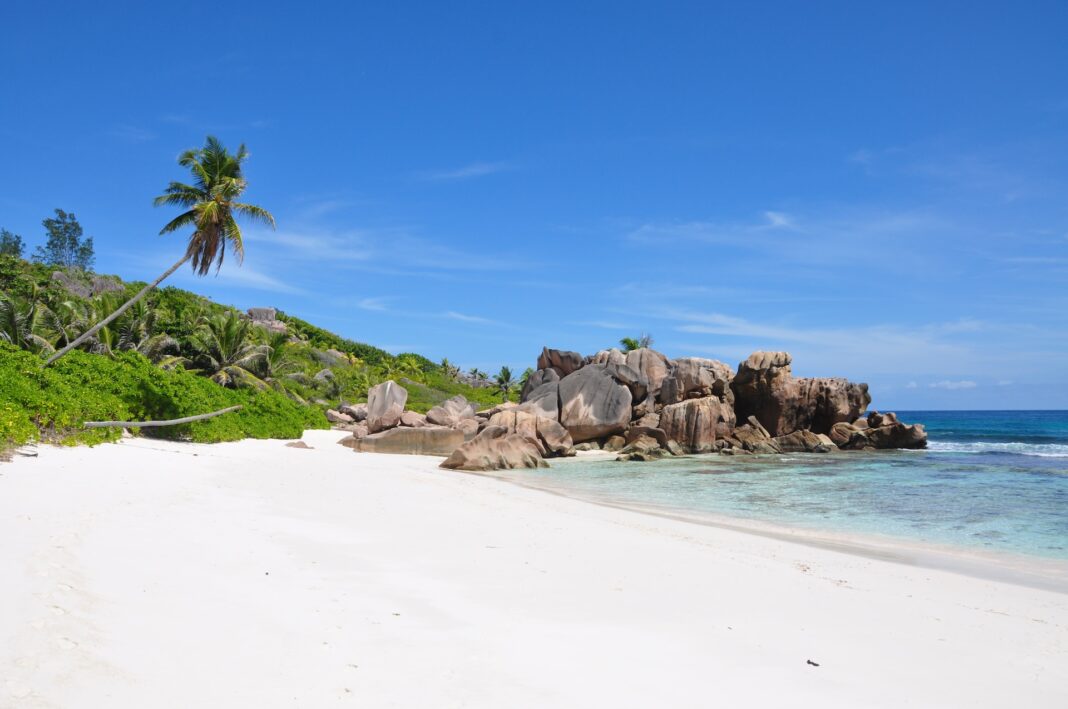2.5hrs
With winter break coming up, I’m sure many of us have vacations planned to go somewhere nice, like Hawaii or the Caribbean, to avoid the harsh winter weather. We’ve all heard the typical luxury tropical vacation – wooden cabins, warm and humid climate, tropical fruit, clear skies, and most importantly, spending the days on a white sand beach.
Ahh, feel the salty ocean breeze graze your face as your toes curl around the warm grains of white sand. The purest form of luxury there is!
But did you know that white sand is made partially from fish poop?
Yes, those fine grains of white luxury under your feet, swept up by wind around your ankles. It’s the poop of a fish. A parrotfish, to be specific.
An Analysis of Natural White Sand
Many components, including as quartz mineral and calcium carbonate, make up the sediments we know as white sand. It is a mechanical heterogeneous mixture, or in simpler terms, a mixture of visibly different things. One of the main components, calcium carbonate, makes up to 70% of white sand, while the rest of it consists mostly of sediments of quartz and silica.
The 70% of calcium carbonate is the sand that comes from the rear-end of the parrotfish. The rest of the sediments are the result of crashing waves eroding away at nearby rock.
So… How Does it Happen?
Parrotfish spend the majority of their time feeding off algae growing on rocks and inside corals. This is a mutualistic symbiotic relationship because the parrotfish gains a consistent food source, and corals stay healthy and thriving.
The parrotfish is special in that its teeth are attached to each other, which allows it to scrape off algae tissue off of rocks and coral. In this process, it often also scrapes off pieces of rock and corallite (coral skeleton) and ingests it. To adapt, the parrotfish has a set of special tooth plates, called the pharyngeal mill, in its throat that helps it grind up the harder pieces.
These pieces of coral and rock are passed through the digestive tract, and since the parrotfish cannot absorb solid rock into its body, it excretes the ground up sediment into the water. This sediment makes up the calcium carbonate that we find in white sand.
Since parrotfish feed constantly, they produce a lot of sand. It’s estimated that a full-grown parrotfish poops out one ton of sand annually.
How Does This Affect Humans?
Parrotfish contribute to the well-being of the corals, which host up to 25% of the entire ocean’s diversity. Because we still don’t understand the vast majority of marine life, it is essential for us to preserve the diversity of the oceans to study the connections between different food webs. One in every four people depend on fish as a source of protein, so understanding marine biology on a deeper level is crucial in order to help sustain both human and marine populations.
As gross as it might sound, the parrotfish poop sand is also incredibly important to sustain land forms. Rising ocean levels force people living on tropical islands and in coastal regions to move progressively further and further inland. The sand that parrotfish produce help absorb the impact of coastal erosion and replenish foreshores that have been washed away.
The Effects of Ocean Acidification
Ocean acidification is a deadly side effect of climate change. Humans release massive amounts of carbon dioxide from our transportation, energy, and manufacturing industries. The carbon dioxide is eventually deposited into the ocean, changing its chemical structure and forming carbonic acid with the carbonate ions in the ocean.
Apart from the fact that this chemical reaction causes the acidity levels in the oceans to rise, killing millions of organisms, it also reduces the amount of carbonate ions available for different marine organisms to build their shells and skeletons with. Among these organisms are coral reefs. They build their skeletons from a chemical called aragonite, which is a crystallized form of calcium carbonate. They pull the calcium carbonate from the ocean’s natural contents of carbonate, but because the formation of carbonic acid has reduced the amount of carbonate available, there is less carbonate available to the corals. Their skeletons become weaker, which eventually causes them to release the algae inside of them in distress. The corals eventually die.
This has a disastrous effect on the parrotfish, which depends on the algae found in the corals as a food source. Not only will the parrotfish starve, but they will also not be able to produce as much calcium carbonate sand from ingesting the corallite since the coral skeleton is so much weaker.
What We Can Do
To mitigate the effects of ocean acidification on our marine ecosystems, food sources, and our beautiful white sand beaches, we must decrease the amount of carbon dioxide that we release into the atmosphere. Some ways we can do to reduce our emissions include:
- reducing transportation by car
- using public transit, biking, and walking are more eco-friendly!
- saving electricity use!
- turn off your lights when they’re not being used
- unplug your devices from their charging ports when they don’t need to be charged
- reduce use of single-use plastics
- I know… nobody likes floppy paper straws. But they are much better for the environment than plastic ones. If they bother you that much though, why not just ditch the straws altogether and drink with your mouth?
- do your best to avoid plastic cutlery. It tastes bad, it’s sharp enough to cut your mouth, it’s not financially intelligent, and it’s bad for the environment. Try to avoid it!
- reduce idling cars
- it’s so wasteful to have your car on idle when you’re only taking a ten minute trip to the grocery store. Why not just keep an extra blanket in there instead of using more gas to heat up your car than you do while driving it?
TL;DR
Parrotfish produce sand by scraping off pieces of rock and coral skeleton and grinding them up in their throats. The sediments then move through their digestive track and are eventually excreted. The sand that they produce is wildly beneficial to humans in the fight against coastal flooding and erosion, but thanks to ocean acidification, both the parrotfish population and their sand-production rate are dropping rapidly. Help protect our ocean life and our white sand beaches by reducing your carbon-dioxide emissions!


